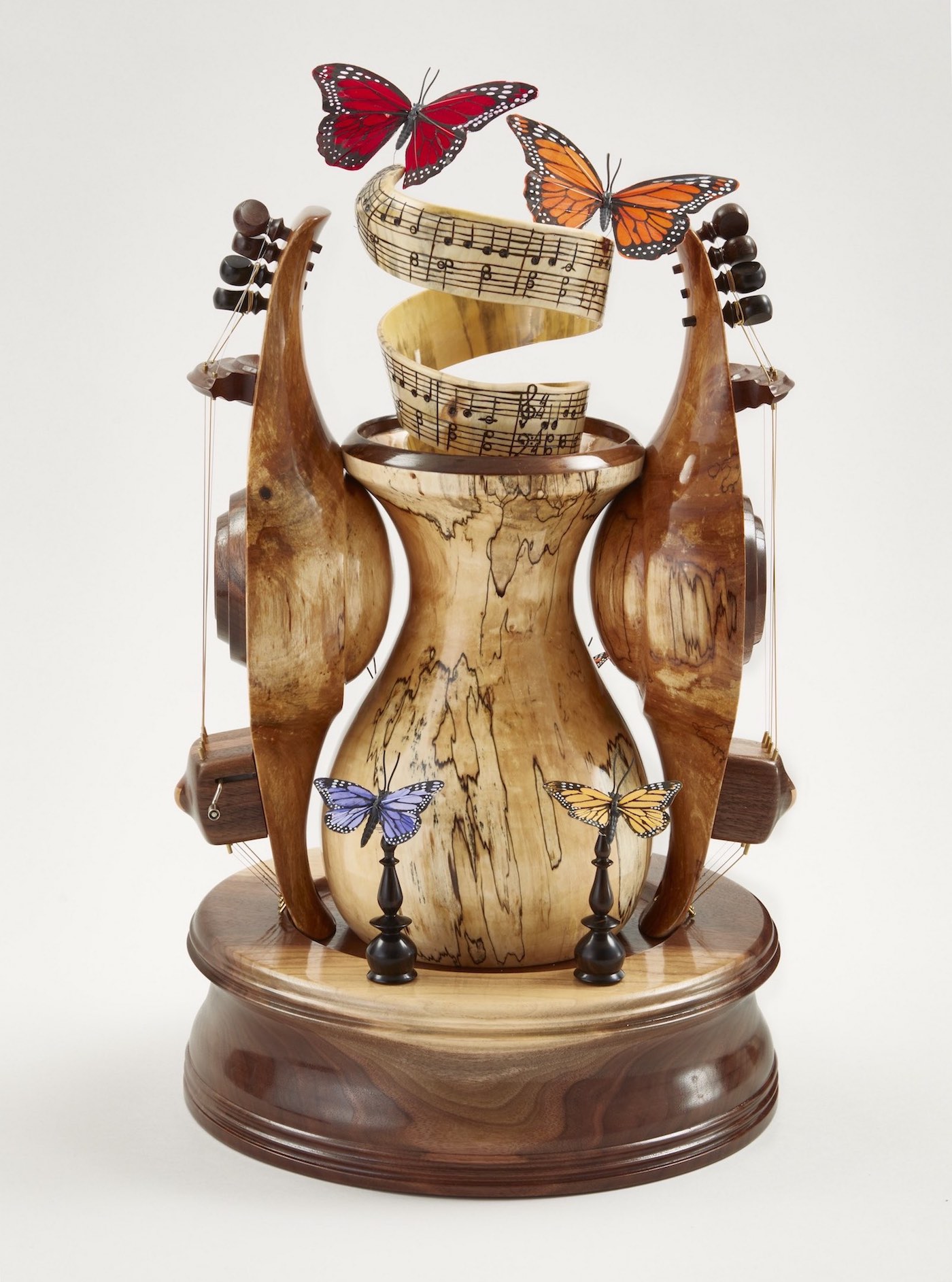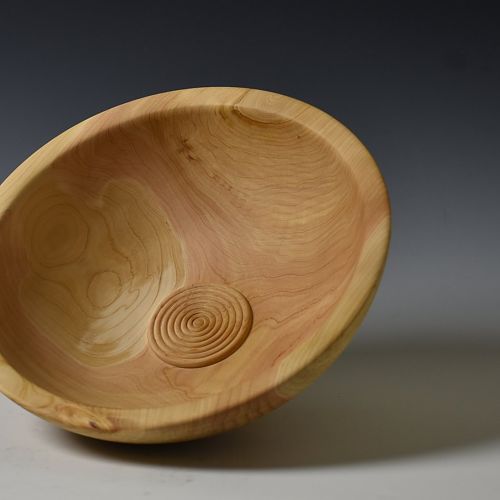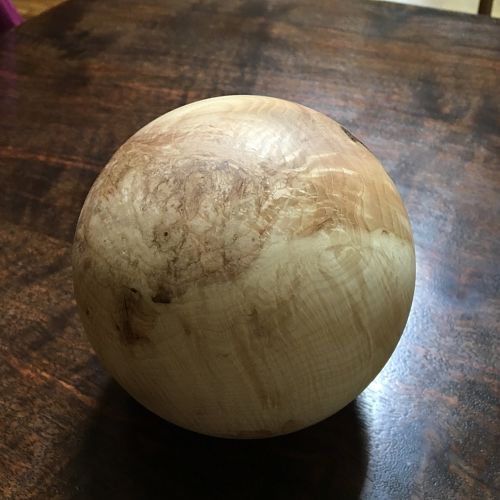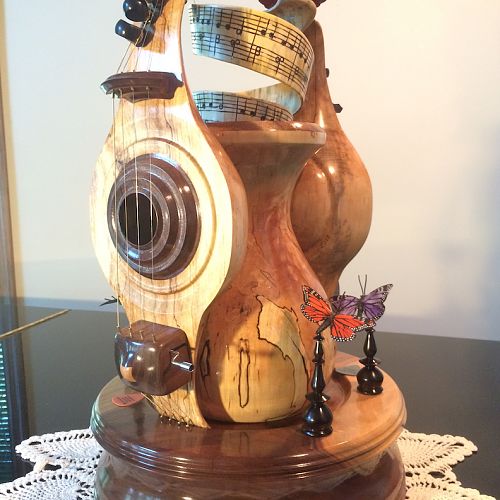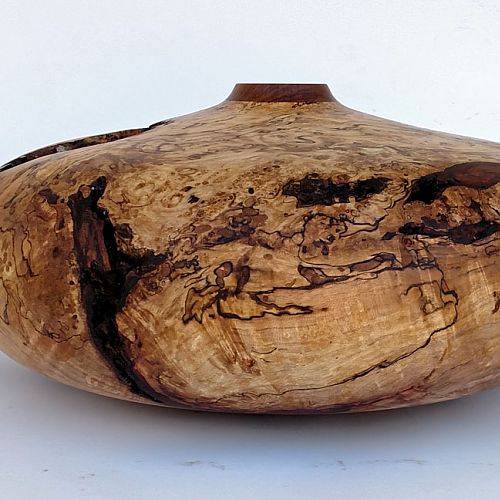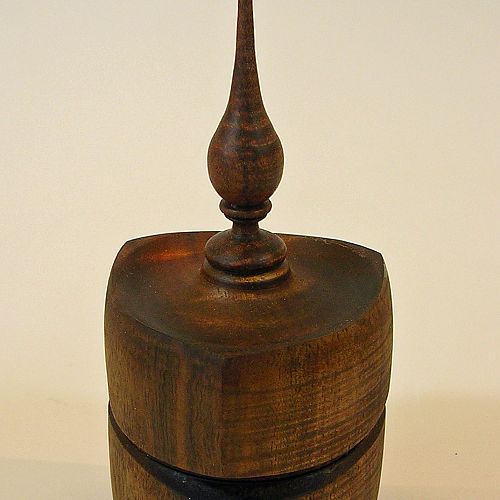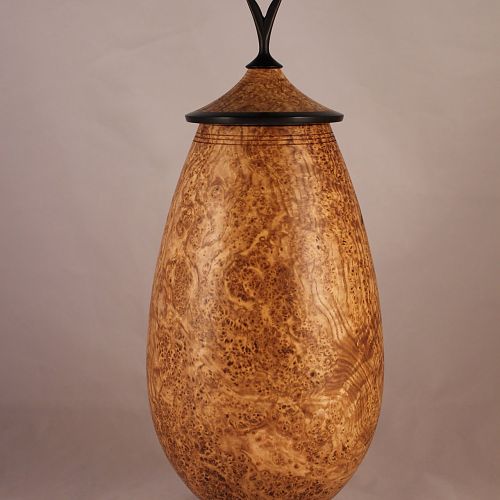Dance of the Butterflies –A Wood-Turned Musical Sculpture
This whimsical musical sculpture integrates 5 major and 19 secondary elements, all made by wood-turning. The large cylindrical base was turned from a slab of black walnut from a tree that blew down locally in 2013. What I call the mandolinos (little pseudo mandolins) were turned from a single log of spalted birch, from a neighbor’s tree. The central vase, that fills the negative space defined by the mandolinos, was turned from a half-log of spalted maple from my wood-turning club (MWA). The music spiral coming out the top of the vase I turned from a log of box elder that I gathered from a fallen tree near to where I live. The walnut insets, bridge boxes and string guides (‘guitar nuts’) were made from the same walnut tree that the base came from. The only non-local woods used are the music box finial knobs and string-tensioning tapered plugs, which were made from African Blackwood.
The sculpture has three ways to make music: two kinds of music box mechanisms (four wind-up spring types and two hurdy-gurdy-crank types); and the two mandolinos., which use authentic mandolin strings. The entire sculpture acts as a sounding board for the three mechanisms.
Materials: Spalted birch, spalted maple, black walnut, box elder, African blackwood
Finish: Sanding to CAMI 2000, CA stabilization, MinWax Polyurethanes
Dimensions: 12” diameter x 20” tall

